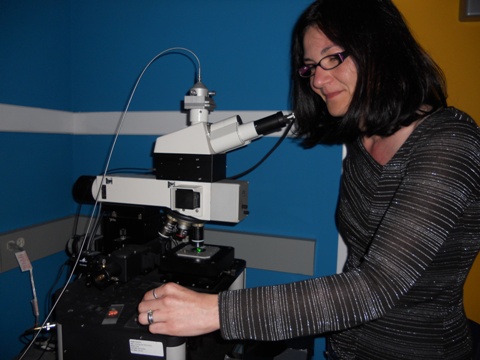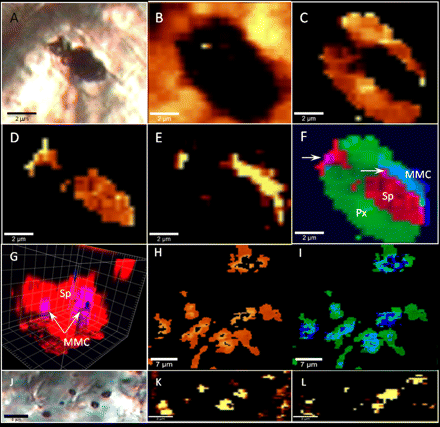Podcast: Play in new window
BOB HIRSHON (host):
Martian carbon… I’m Bob Hirshon and this is Science Update.
Organic carbon is essential for life on earth. Now, Carnegie Institution researchers have discovered organic carbon locked inside meteorites from Mars. Astrobiologists Mihaela Glamoclija and Andrew Steele say the organic carbon was created by chemical, rather than biological processes. Still, it’s a precursor to the building blocks of life.
ANDREW STEELE (Carnegie Institution of Washington):
What we’re doing here is setting a baseline really and saying look, Mars does this chemistry. Now, let’s see if anything has changed that chemistry, and so it gives us a more robust way to detect life, if it’s there.
HIRSHON:
The scientists used a specialized laser to identify the chemical fingerprint of organic carbon within the meteorites. And with a powerful microscope, they viewed the tiny bits of carbon within slices of the rock.
MIHAELA GLAMOCLIJA:
We are now able to say there is carbon on Mars, and it is very exciting.
HIRSHON:
I’m Bob Hirshon, for AAAS, the science society.

Different views of organic carbon from Mars meteorites:
(A) Transmitted light (TL) image of a single inclusion 4 μm below the surface of DaG 476 (scale bar, 3 μm). (B to F) Raman maps of the same inclusion as (A) (the lighter the color, the more intense the mapped peak): (B) Olivine (~820 cm−1), (C) Pyroxene (~1005 cm−1), (D) Spinel-group oxide (~670 cm−1), (E) MMC (Carbon G band 1580 cm−1), (F) RGB color image, green – px -pyroxene, red – sp. – spinel-group oxide, blue – MMC (white arrows show the joint occurrence of oxides and MMC. (G) A CRIS 3D depth profile through a melt inclusion 5 – 20 μm into the sample surface within DaG 476. Red – sp. – spinel-group oxide, and Blue MMC (grid is in 2 μm increments). MMC is visualized blue when in isolation and purple when with oxides. (H) Raman peak images of peak center shift map of oxide from 660 to 720 cm−1, (lighter orange = higher wavenumber = more chromite rich; darker orange = lower wavenumber = magnetite rich) in inclusions in NWA1110 (scale bar 7 μm). (I) Blue-Green image of; Blue – MMC, Green – spinel-group oxide peak center shift map showing the occurrence of MMC with higher wavenumber chromite rich phase. (J) Transmitted light image of inclusions within pyroxenes in ALH 84001 (scale bar is 3 μm), Raman peak maps of (K) Spinel-group oxide (L) MMC. (Image: https://www.sciencemag.org/content/early/2012/05/23/science.1220715.full /Accessed 4 June 2012 /Carnegie Insitution)

